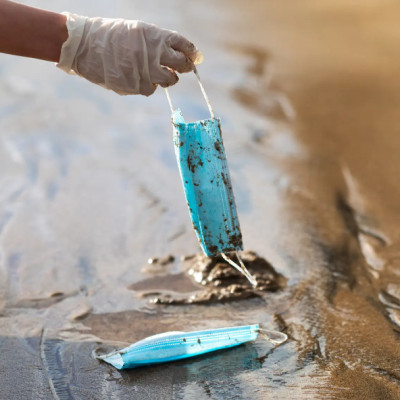
2023-03-09
Visited : 1201
In the midst of the pandemic in 2021, we were throwing out three million face masks per minute. Scientists sounded the alarm early, but the response to cope has seen a lot end up in our waterways.
In fact, an estimated 26,000 metric tons (28,660 tons) of pandemic-related non-degradable plastic trash – from medical supplies to online shopping packaging – has since washed into the world’s oceans, posing a very real, alarming and urgent threat to marine habitats.
A team of researchers at NYU Abu Dhabi (NYUAD) has developed a single-step, organic solvent-free, hydrothermal process to convert polyethylene-based plastic bags and polypropylene-based surgical masks into carbon dots.
Carbon dots, a carbon-based nanomaterial, have attracted a lot of research interest due to favorable attributes such as high stability and electron mobility, and have use in biological imaging, environmental monitoring, chemical analysis, targeted drug delivery, disease therapy and anti-counterfeiting.
The global market value of carbon dots is expected to reach US$6.412 billion by 2025, up from US$2.496 billion in 2019. But until now, turning plastic into carbon dots has been time consuming and involved the use of toxic chemicals and solvents in the process.
Now, in a breakthrough, the NYU team has developed a single-step oxidative hydrothermal approach to upcycle polyethylene plastic bags and polypropylene surgical masks into 1-8-nm fluorescent carbon dots. The process, which researchers estimate to be slightly more expensive than current plastic recycling methods, is however cost-effective when the market for carbon-dot technology is taken into account. And it can even safely process plastics contaminated with organic waste such as food scraps.
The researchers cost the new method at around $3,670 per ton, while existing mechanical and chemical recycling methods are close to $1,000. However, the carbon-dot end product of even a conservative 60% yield would have a market value of around $1,800 per kg ($3,970 per lb) of plastic.
"The new method our team has developed is a cost-effective and safe method that can be easily implemented to significantly reduce the amount of harmful plastic that is released into our ecosystems," said Khalil Ramadi, senior author of the study and assistant professor of bioengineering at NYUAD.
Plastic recycling has resulted in innovative second uses for the waste that includes bike paths, office furniture, portable speakers, floating green spaces, beautiful art and various types of fuel. Scientists have even used single-use plastic bags to create carbon nanotubes for use in tech such as solar panels, computers and batteries.
However, the researchers believe this method may be able to deliver on the scale needed to put a dent in the world’s single-use plastic problem.
The study was published in journal Green Chemistry.
Read the original article on New Atlas.